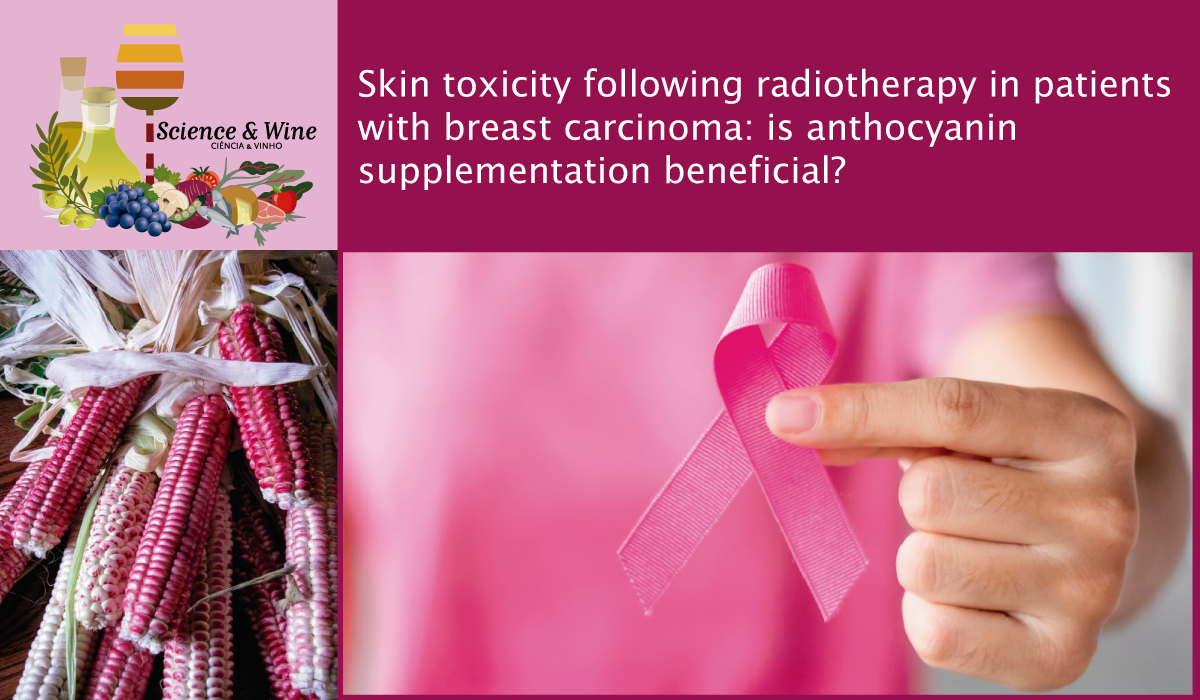By Chiara Cerletti and Francesca Bracone
Department of Epidemiology and Prevention, IRCCS Neuromed, Pozzilli (IS) Italy
This is the title of a paper just published on the Journal of Nutrition (1), summarized and commented here below.
Adhesion to the Mediterranean diet reduces the risk of chronic degenerative diseases and of total mortality. Bioactive polyphenols, of which fruits, vegetables and wine contributing to the Mediterranean dietary pattern are particularly rich, possess antioxidant activities and contribute to reduce oxidative stress and to down-regulate the inflammatory response to injury. Within polyphenols, anthocyanins are a subclass of flavonoids, responsible for the red, purple and blue colors of plants and fruits, widely recognized for their anti-inflammatory and antioxidant properties (Figure 1).

An observational study showed that moderate wine consumption was protective on the skin toxicity induced by radiotherapy in breast cancer patients, an effect ascribed to the antioxidant activity of polyphenols contained in wine (2).
The skin response to ionizing radiation of radiotherapy may involve multiple inflammatory outbreaks: vascular damage, with consequent thrombin generation, release of cytokines by circulating inflammatory cells, contributing to the inflammatory process, dermal fibroblast activation and skin fibrosis, disruption of basal cells by activated metalloproteinases. On the other hand, anthocyanins have been shown to stimulate extracellular matrix proteins, such as collagen and elastin, in skin fibroblasts, to inhibit the injury of dermal fibroblasts induced by UV radiations, to reduce the inflammatory cytokine release and actions and to blunt the excess of oxygen radicals generated by radiations.

On the basis of these observations and thanks to the availability of an extract of purple corn cobs rich in anthocyanins (Figure 2), obtained by genetic selection by Chiara Tonelli and Katia Petroni from the Department of Bioscience of the University of Milano (Italy) (3), we designed a randomized, controlled, double-blind clinical trial (EU-ATHENA trial) (Figure 3) to test the possible beneficial effect on skin toxicity of anthocyanins in breast cancer patients undergoing radiotherapy at the Radiotherapy Unit of the Gemelli Molise Hospital of Campobasso. The supplementation of water-soluble extracts (containing 375 mg anthocyanins/day or none in the placebo) three times a-day, started one week before and continued for all radiotherapy duration, of 3 or 5 weeks. The skin status of the irradiated breast was observed before and at different times after radiotherapy up to one year: a non-invasive device, the Cutometer® dual-MPA580, provided quantitative indices of skin distensibility, elasticity and viscoelasticity, while the Mexameter® MX18 probe recorded skin erythema and melanin. Acute and late skin toxicity were also scored according to the RTOG/EORTG scale. Circulating blood cells and inflammatory-metabolic biomarkers were also measured before and at the end of the supplementations.
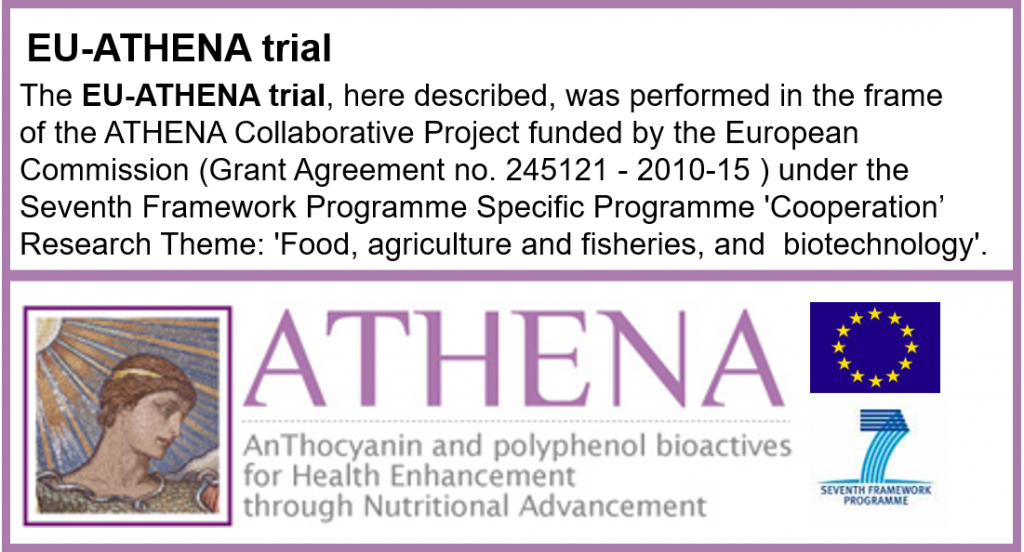
A total number of 193 patients, randomized to either anthocyanin (n=97) or placebo (n=96), completed the trial; the supplementation was well tolerated and safe. The changes in skin parameters observed acutely after radiotherapy (decrease of skin distensibility and elasticity and increase of viscoelasticity, erythema and melanin) were similar in the anthocyanin and placebo groups; the parameters of late toxicity, in particular distensibility and viscoelasticity parameters, decreased and increased, respectively, were also comparable in the two groups, up to one year (Figure 4). The RTOG/EORTG scale scores were similar in the two supplementation groups of patients both for acute and late toxicity. Within the blood biomarkers modified by radiotherapy, a moderate increase in total and HDL cholesterol and triglycerides was prevented by anthocyanins.
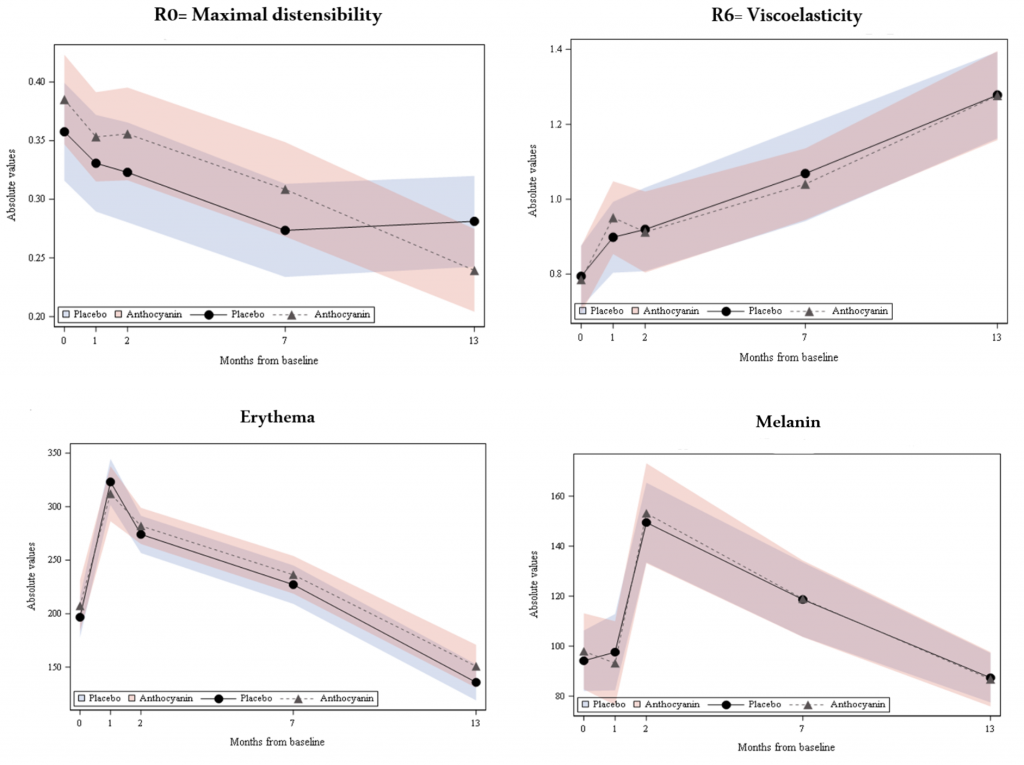
The failure of anthocyanins to prevent the skin toxic collateral effect of radiotherapy prompted us to explore the possible concomitant reasons, discussed here below, before concluding that anthocyanins are not effective against this inflammation/oxidative stress-undesired adverse effect of radiotherapy.
The dosage of anthocyanins in the supplement was two-to-three fold higher than the average dietary intake of a general population living in the same region; the compliance to the supplement intake was checked by standard methods and the bioavailability (resulting from absorption, metabolism and excretion), detected by urinary excretion of the main anthocyanin metabolites, was measurable at the end of supplementation in the patients receiving anthocyanins but not in the placebo group. However, the possibility that the anthocyanins assumed by the patients could not have reached in sufficient concentrations their local target of action cannot be excluded.
The individual variability of response to radiotherapy may have influenced the severity of radiation-induced skin toxicity and then the possible protective effect of anthocyanins: within the variables that could have influenced the skin toxic effect are the radiotherapy regimen, previous chemotherapy, body habitus such as breast volume, stage of cancer, smoking and others. The heterogeneity of patients included in the trial, although well balanced in the two randomized supplementation arms, would decrease the statistical power of the study and mask the anthocyanin effect; however, patient heterogeneity has to be considered an advantage to the trial result applicability to more extended potential users and to a real-life situation. The use of anthocyanins to prevent the radiotherapy collateral skin effects might be optimized by a precision medicine approach.
The finding that anthocyanins exerted a beneficial effect on HDL and triglyceride levels in breast cancer patients, although statistically not significant, is of great interest and consistent with numerous experimental and clinical studies on the anthocyanin impact on cardiometabolic health, through modulation of lipid oxidation and inflammation pathways. The latter pathways are considered part of the common pathogenetic substrate underlying several degenerative disorders, including hormone-dependent tumors (such as breast cancer) and ischemic cardiovascular disorders (the so-called common soil hypothesis) (4).
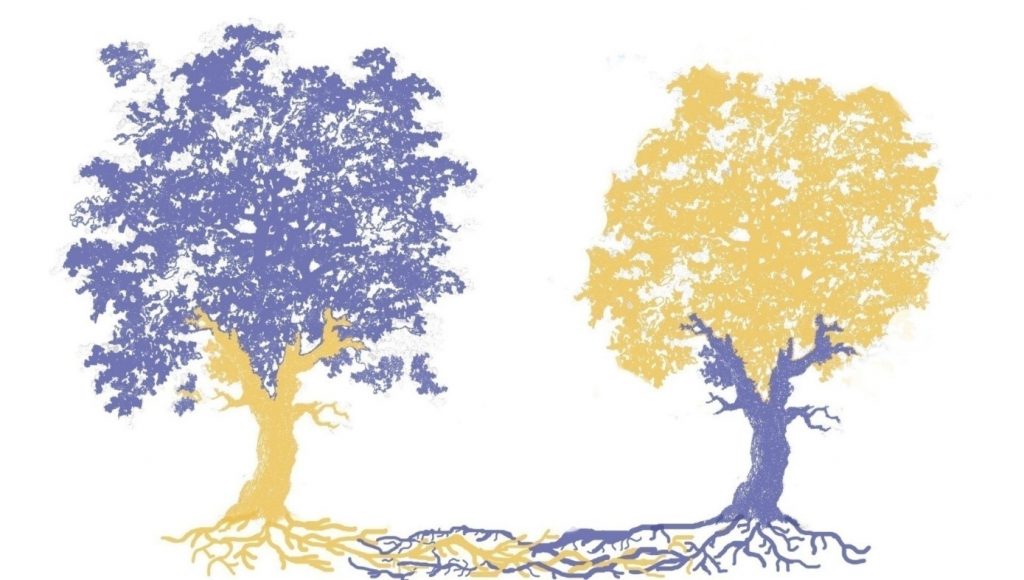
share common mechanisms and risk factors. They can be represented as two different trees, which share common, intermingled roots (4)
In conclusion, trials may obviously end with either positive or negative results: the latter are as important as the former, as they may help clarify some uncertain points and optimize future potential treatments.
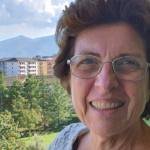
Chiara Cerletti
Laboratory of Nutraceutics
Department of Epidemiology and Prevention
IRCCS Istituto Neurologico Mediterraneo NEUROMED
Via dell’Elettronica
86077 POZZILLI (IS), Italy
Biological Science degree cum laude obtained in 1970 at University of Milan; PhD in Pharmacological Research at the Istituto di Ricerche Farmacologiche “Mario Negri” in Milan, 1975. At the same Institute she developed her research activities from 1971 to 1987, and participated at the foundation of a new Centre for Biomedical Research of Mario Negri Institute in the Central Italy Abruzzo region. From 2003 to 2013, with the research group led by Professor Giovanni de Gaetano, she moved to Campobasso at the High Technology Research and Education Centre of the Catholic University, where the epidemiological study “Moli-sani” was started, finally recruiting 25,000 people to study genetic and environmental risk factors of cardiovascular and cancer diseases. With the same research group, she is now from 2013, at the IRCCS Neuromed of Pozzilli, in the Department of Epidemiology and Prevention. Chiara Cerletti’s main research topics are: physiopathology, biochemistry and pharmacology of blood platelets and leukocytes; experimental and clinical pharmacology of aspirin and other antiplatelet drugs ; platelet.leukocyte interaction, adhesive molecules and transcellular metabolism of prostanoids; effect of dietary polyphenols and nutraceutics oh health by in vitro studies on cell functions and experimental animal studies and by organization of clinical trials in humans.
Co-author of more than 240 publications on international peer reviewed journals, of numerous book chapters and invited reviews. H index= 67, citations more than 27,000 (Google Scholar, 2020). During her almost 50-year scientific career, she also dedicated herself to the reviewer activity for numerous specialized scientific journals and was Editor of several journals (Platelets, Thromb Res), a member of the Council of SISET, co-chairman of the Scientific Subcommittee on Platelet Physiology of ISTH, and elected member of the Scientific and Standardization Committee (SSC) e of the Publications Review Committee of’ISTH, a member of the Organizing Committee of the XVI Congress of ISTH (Florence, June 1997). She has been an active member in the Council of the European Thrombosis Research Organization (ETRO), in particular dedicated at fund raising (through the EU Commission) and at the organization of 19 Euroconferences, Working Parties and Advanced Teaching Courses in different European Countries. She participated as a European Commission expert to different Monitoring Panels (1999 Fifth Framework Programme M. P.; 2000 Improving Human Potential and Socioeconomic Knowledge Base Programme M.P.; 2001 Framework Programme M.P. and was chairperson of the Quality of Life Specific Program).
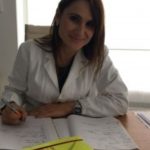
Francesca Bracone
Department of Epidemiology and Prevention
IRCCS Istituto Neurologico Mediterraneo NEUROMED
Via dell’Elettronica
86077 POZZILLI (IS), Italy
Psychology degrees obtained in 2007 at University of Chieti; in 2010 enrolment in the Molise Order of Psychologists. Specialization in Cognitive-Behavioral Psychotherapy at the Clinical Psychology Center in Pescara (2014) and International Certification in Psychotherapy Cognitive Behavioral Therapy.
She belongs to the Italian Association of Behavioral Analysis and Modification and Behavioral and Cognitive Therapy (AIAMC- Milan). She joined the research group led by Professor Giovanni de Gaetano at the High Technology Research and Education Centre of the Catholic University in Campobasso (2007-2013) and at the IRCCS Neuromed of Pozzilli (2014 to present). She actively participated at the recruitment phase of the large epidemiological study Moli-sani, which enrolled 24,325 subjects and is now involved in the ongoing active follow-up recall. Her particular interest is on the psychological aspects (resilience/coping, psychological distress, depression, anxiety, stress, post-traumatic disorders) relevant to health status and on the frailty evaluation of aged subjects.
She was responsible of the recruitment and follow-up of the EU-Athena trial, which tested the effect of an anthocyanin-rich supplement on the prevention of skin toxicity of radiotherapy in breast cancer patients, and is participating into the data analyses. She is co-author of 21 publications (one as first author) in peer-reviewed journals, with a personal H index of 9 (Google Scholar, November 2020).
References
- Bracone F, De Curtis A, Di Castelnuovo A, Pilu R, Boccardi M, Cilla S, Macchia G, Deodato F, Costanzo S, Iacoviello L, de Gaetano G, Morganti AG, Petroni K, Tonelli C, Donati MB, Cerletti C; EU-ATHENA Trial Investigators. Skin toxicity following radiotherapy in patients with breast carcinoma: is anthocyanin supplementation beneficial? Clin Nutr. 2020 Oct 6:S0261-5614(20)30502-1. Epub ahead of print.
- Morganti AG, Digesù C, Panunzi S, De Gaetano A, Macchia G, Deodato F, Cece MG, Cirocco M, Di Castelnuovo A, Iacoviello L, Valentini V, Cellini N, de Gaetano G. Radioprotective effect of moderate wine consumption in patients with breast carcinoma. Int J Radiat Oncol Biol Phys. 2009 Aug 1;74(5):1501-5.
- Pilu R, Piazza P, Petroni K, Ronchi A, Martin C, Tonelli C. pl-bol3, a complex allele of the anthocyanin regulatory pl1 locus that arose in a naturally occurring maize population. Plant J. 2003 Nov;36(4):510-21.
- Iacoviello L, Bonaccio M, de Gaetano G, Donati MB. Epidemiology of breast cancer, a paradigm of the “common soil” hypothesis. Semin Cancer Biol. 2020 Feb 20:S1044-579X(20)30043-2.

